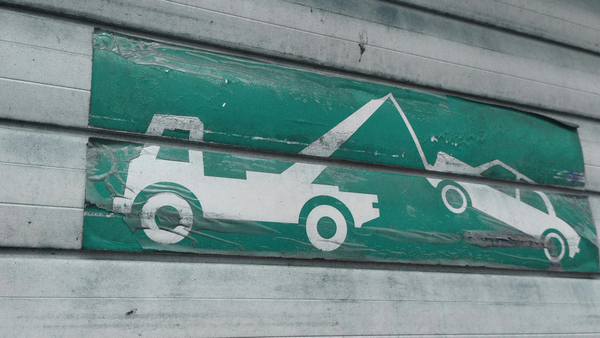
You have probably all seen the clip by now. You can feel the disaster coming. Célia Gery (Auvergne-Rhône-Alpes) drops back to speak to her directeur sportif in the team car, who is also driving during France’s junior women’s national championships. During the course of the conversation, the DS rolls into the back of Amandine Muller (Grand Est), causing her to crash.
Fortunately for everyone involved, Muller fell onto her left side, and avoided the more serious repercussions of falling into the path of the car. Gery crashed over the top of Muller, but recovered to win, with Muller coming in second. Disaster was averted, but it could have been so much worse.
It is the kind of viral social media clip that makes cycling look insane. Friends from outside our pro cycling bubble have sent it to me, asking why this kind of thing is allowed to happen in a bike race. Imagine another sport, where things capable of such destruction - in this case, cars - were allowed to be so close to the action.
“We are so grateful Amandine fell on the left side and not the right, as the car couldn't stop fast enough and it could have been fatal for her,” Adam Hansen, the president of the CPA, the rider’s union, wrote on social media in reaction.
“We will watch this final outcome of the DS very closely. I hope whatever the outcome is, he realises a car can be a weapon in the wrong hands.”
It is no surprise to any cyclist, at any level, that a car can pose a threat. Most of us can share unpleasant anecdotes of interactions that support this view. It happens to professionals in training, it just seems incredible that it happens in-race too. If there is anywhere a cyclist should be safe from the dangers of coming into contact with a motor vehicle, it should be in a bike race.
Amandine Muller (Grand Est) et Célia Gery (Auvergne-Rhône-Alpes) ont été accidentellement heurtées par le véhicule de l'équipe Auvergne-Rhône-Alpes, au 31ᵉ kilomètre de la course féminine U19 des championnats de cyclisme de l'avenir 2024https://t.co/tQH29yyWZk pic.twitter.com/7LHxwEACmOMay 12, 2024
Those not au fait with professional cycling might be alarmed by the number of cars, motorbikes and buses involved in the moving carnival that is a bike race. At least one car per team follows the race, or a rider on the attack, as in the case of Gery and Muller, and at top-level races this is normally two. Add in cars for the commissaires, VIPs, security, and the motorbikes for the same, and for TV, photographers, and journalists, and there is a lot of horsepower surrounding the peloton at a bike race.
Eight years ago, Antoine Demoitie of Wanty-Gobert died after being hit by a motorbike rider after a crash at Gent-Wevelgem. You would think that this might be the point of no return in terms of rider safety and vehicles at bike races, but no.
At the French national championships, Gery’s DS was driving the car, as well as providing support. Arguably, that’s too many hats for one person to wear, safely. This scenario is rarely the case at larger events.
In response to Hansen on Twitter, TDT-Unibet owner, DS, and former rider Bas Tietema asked what the value of having team cars there really was - “as crazy sh*t happens in the convoy”.
He continued: “I passed the official DS course without riding a single km in a car. If you have a newbie passing the test he is allowed to be directly in a race like [Paris-]Roubaix for example. Of course, as a team you have a responsibility, but in terms of rules you are allowed.”
The answer, as Tietema suggested, might be in having a more established neutral service system, and fewer team cars, with specifically trained drivers. However, as with everything in cycling, this would require a major adjustment , and one that many would be unwilling to stomach. It would also put more pressure on already struggling race organisers.
A start is to ensure the person driving is able to fully concentrate on the road, so the DS giving out bottles, or imparting advice, should not be the person behind the wheel. This is just a start, however. Fewer vehicles in general is the only way to genuinely guard against this kind of incident. And, that’s before we’ve even begun to talk about the environmental impact of the convoy.
This piece is part of The Leadout, the offering of newsletters from Cycling Weekly and Cyclingnews. To get this in your inbox, subscribe here.
If you want to get in touch with Adam, email adam.becket@futurenet.com.







